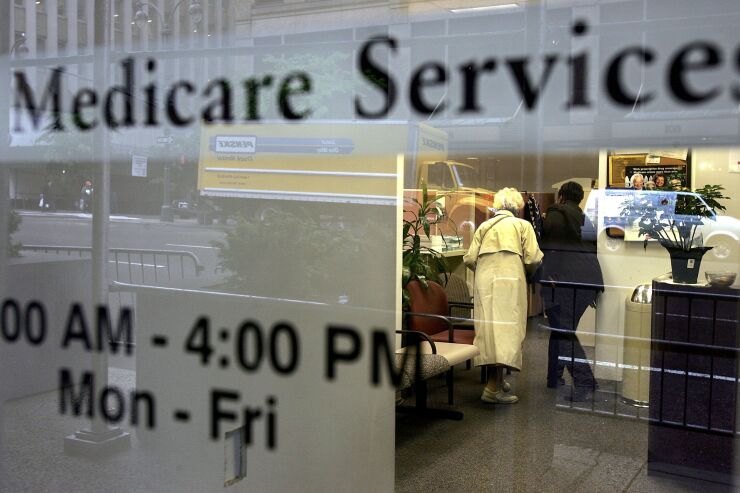Want unlimited access to top ideas and insights?
2025 will prove to be a challenging year for the insurance industry, as rising healthcare costs seek to plague employers and erode Social Security's annual cost-of-living adjustments. With many states seeing a changing of the guard in insurance commissioners, and a second Donald Trump administration on the horizon, the future is uncertain.
Throughout his campaigning, Trump has been adamant about not cutting funding to
"American citizens work hard their whole lives, contributing to Social Security and Medicare," according to the
While promising not to make any direct reductions to the program, other Trump policy plays related to immigration and tariffs could indirectly impact the funding streams for Social Security. This would be in conjunction with the impact of rising Medicare costs on COLA growth.
Read more:
The premiums for Medicare Part B, which cover doctor's visits and other outpatient services, are projected to rise by 5.9% and soar past COLA's 2.5% growth in 2025. When comparing these figures to an
Private healthcare isn't expected to fare much better.
A recent survey from financial services company Mercer estimates that employees will have to cover an additional 5.8% of benefit costs in 2025, driving many companies to shift the cost burden onto employees and making the services too expensive to effectively use.
"Look at your investment in primary care," Ashok Subramanian, co-founder and CEO of Centivo, a health plan provider for self-funded employers, said in an interview with Employee Benefit News'
Read on for expert insight into how Trump's reelection could impact the insurance industry at large.
Who crossed the finish line first in state insurance commissioner races?

North Carolina, Washington, Delaware and Montana were
Mike Causey, the incumbent Republican candidate for North Carolina,
With more than 2.5 million votes in Washington, Democratic candidate Patricia Kuderer trumped Republican Phil Fortunato 57% to 53%, filling the seat of former commissioner Mike Kreidler who retired.
Read more:
What does the presidential election mean for the insurance industry?

Donald Trump is returning to the White House in 2025, bringing Republican control of all three major governmental branches with him. Policy plays ranging from the Tax Cuts and Jobs Act of 2017 to climate change will have lasting impacts on the insurance industry.
Within the TCJA were numerous tax hikes related to insurance such as modified discounting rules for unpaid loss reserves, reductions in the dividends received deduction and more.
"It's in some ways, a cautionary tale, that as we go into this exercise in 2025 where we're looking at the strong possibility of additional tax increases, you have to ask, are we going to get treated differently? And if so, why," John Gimigliano, principal, tax, KPMG LLP said at the consultancy's annual insurance industry conference.
Read more:
Are employers prepared for higher healthcare costs in 2025?

Among expectations for rising
A
Ashok Subramanian, co-founder and CEO of Centivo, a health plan provider for self-funded employers, said in an interview with Employee Benefit News'
"To create a truly sustainable healthcare system that involves insurance, we really have to change how people access and consume care," he says. "We really believe in the concept of advanced primary care as the access point, so people have long-term relationships with their primary care physician."
Read more:
Rising Medicare costs diminish Social Security COLA growth

In 2025, Medicare Part B premiums will outpace Social Security's cost of living adjustment by more than double, according to findings from the Centers for Medicare & Medicaid Services. Those collecting checks each month will be surprised to see how much the disparity between the two figures will play into their payments."It does swallow up their COLA," Mary Johnson, an independent Social Security and Medicare analyst, said in an interview with Financial Planning's
Premiums for Part B of the program, which go towards doctors' appointments and other outpatient services, are anticipated to jump by 5.9%. COLA will only rise by 2.5%, leaving a 2.4% deficit placed on Medicare recipients.
Read more:
2025 will be business as usual for mortgage insurers, and business is good

According to Adam Pollitzer, president and chief executive of NMI Holdings, the market strength that private insurers have experienced this year so far is expected to continue into 2025.
Among the six major players, which include Arch Capital Group, Enact Mortgage Insurance Corporation, Essent Group, MGIC Investment, Radian Group and NMI, Pollitzer predicted that the cohort will see roughly $285 billion of new insurance written this year with a "similarly attractive environment in 2025," he said during a company earnings call.
Despite relatively flat NIW for four out of the six, NMI saw a slight increase of 1% from the prior quarter while MGIC's performance was more significant at $17.2 billion for the third quarter compared against $13.5 billion in the second quarter.
Read more:





